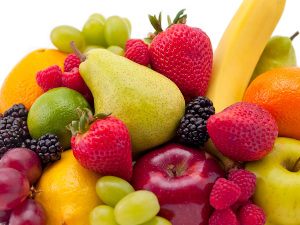Agronometrics in Charts: Large swathes of Peru's avocado production poised to start

In this installment of the ‘Agronometrics In Charts’ series, Sarah Ilyas evaluates the state of the Peruvian avocado market. Each week the series looks at a different horticultural commodity, focusing on a specific origin or topic visualizing the market factors that are driving change.
Peru is the third-largest avocado producer, boasting a 8.6% share of the global production. The highest production occurs in La Libertad, Ayacucho, Áncash, Lima, Arequipa, Apurímac and Huancavelica regions. 39,645 hectares of Peruvian land located in a total of 17 regions are marked for avocado production.
According to Peru’s avocado growers’ association, ProHass, 2021 was a year of substantial growth. Production rose by about 20 percent compared to 2020 to hit 483,00 tons of shipped fruit. Fernando Cilloniz Benavides, president of the consulting firm Inform@ccion projects that in 2022, Peruvian fresh avocado exports will grow in volume by around 20 percent compared to the previous year, exceeding 600,000 tons.
“There are many new avocado plantations throughout the country and especially in the coastal valleys and the upper parts of the ravines, heading towards the Sierra, such as Huaytará and Castrovirreyna (provinces of Huancavelica), so exports of this fruit will continue to grow,” he said.
Large swathes of newly planted orchards have been continuing to enter production (3 000 ha/year planted on average between 2017 and 2020). As claimed by ProHass, an additional 5,000 ha were set up in 2021. Therefore, any holdoff in the consistent growth is highly unlikely. Incoming volumes culminated at 6.9 K tonnes in week 29 of 2021.
(Source: USDA Market News via Agronometrics. Agronometrics users can view this chart with live updates here)
ProHass has been implementing a certificate of conformity in order to grant certification, through a first-level certifier, to the Hass avocados that meet the dry matter and post-harvest management standards. "We expect that, since it's voluntary, this year a third of Peruvian Hass avocado exports will have this certificate," said Juan Carlos Paredes Rosales, the president of ProHass in an industry publication.
The season kicked off with production mainly occurring in the Sierra region. Small producers started contributing around week 12 and contributions from big producers are expected in week 18, which will likely allow prices to stabilize. Countries such as South Korea, Thailand, Japan, the Philippines, Vietnam, and Australia are witnessing a steady increase in avocado consumption and the steep increase in supply of avocados from Peru will facilitate their introduction into these markets.
In 2021, the main destinations for Peruvian avocados were the Netherlands, the United States, Spain, and Chile, which together accounted for 68% of the total volume exported. Within the US, the Philadelphia- Camden area is the most prominent market for Peruvian avocados, followed by Los Angeles - Long Beach and Savannah.
(Source: USDA Market News via Agronometrics. Agronometrics users can view this chart with live updates here)
In our ‘In Charts’ series, we work to tell some of the stories that are moving the industry. Feel free to take a look at the other articles by clicking here.
All pricing for domestic US produce represents the spot market at Shipping Point (i.e. packing house/climate controlled warehouse, etc.). For imported fruit, the pricing data represents the spot market at Port of Entry.
You can keep track of the markets daily through Agronometrics, a data visualization tool built to help the industry make sense of the huge amounts of data that professionals need to access to make informed decisions. If you found the information and the charts from this article useful, feel free to visit us at www.agronometrics.com where you can easily access these same graphs, or explore the other 21 commodities we currently track.












































